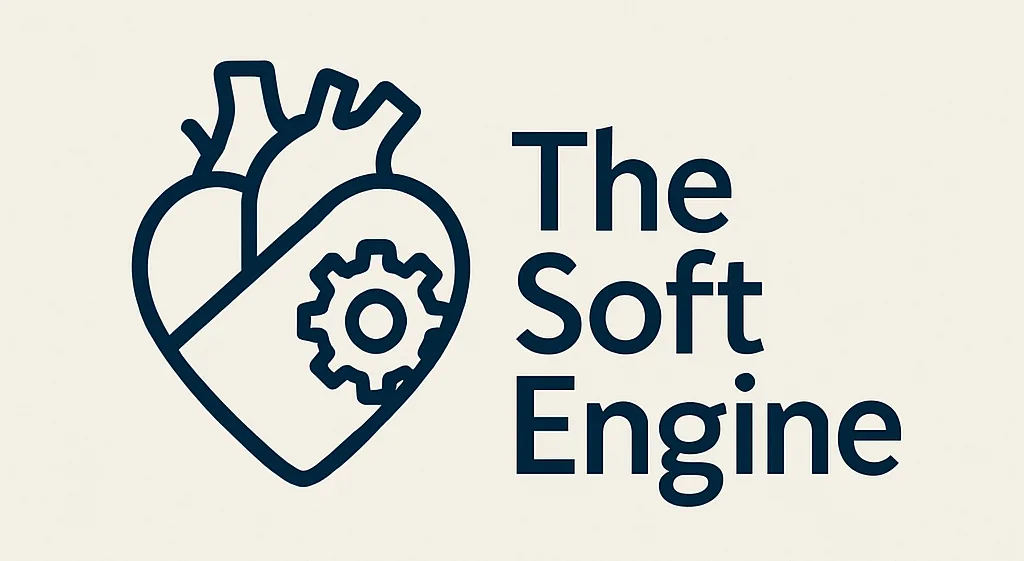Table of Contents
One bad night of sleep can cut your productivity by nearly 30% — the same as losing an entire workday. Add constant pings, shifting priorities, and outdated tools, and even the best teams end up spinning their wheels.
This guide unpacks the causes of low productivity you might not see coming (from everyday distractions to hidden health factors) and shows you how to flip each one into focus with practical, science-backed fixes.
What Is Low Productivity and Why Does It Happen?
Low productivity is when your output consistently falls short because something (personal, organizational, or environmental) is blocking your ability to focus and deliver.
Top 5 Causes of Low Productivity at Work
- Unclear goals and shifting priorities
- Poor leadership and weak communication
- Constant distractions and multitasking
- Outdated tools and inefficient processes
- Stress, burnout, or lack of sleep
These five factors show up again and again in research as the biggest productivity drains.
Each one not only slows work but also compounds stress and errors. The rest of this guide dives deeper into 12 hidden causes and how to fix them.

Main Causes of Low Productivity at the Individual Level
Some bottlenecks start with us, but the upside is that many of them are within reach to change.
1. Skills and Knowledge Gaps
When you’re handed a task you’ve never been trained for, progress slows and mistakes multiply. Closing that gap through coaching, shadowing, or targeted courses often unlocks speed and confidence almost overnight.
2. Time Management and Procrastination
Multitasking feels efficient, but research shows our brains lose time and focus every time we switch tasks. The more often we toggle, the more errors creep in. Structuring work into blocks or batching similar tasks helps protect momentum.
3. Mental and Physical Health
Stress hormones, poor sleep, or lingering health issues quietly drain cognitive energy. Less than seven hours of sleep, for example, is enough to reduce reaction times and cloud decision-making. Protecting rest, exercise, and recovery directly feeds output.
4. Motivation and Goal Clarity
Productivity thrives when goals feel tangible and achievable. Vague objectives leave attention scattered; clear milestones keep effort sharp and rewarding.
If you find yourself in these trenches, start simple with a Pomodoro timer, a Trello board, or even pen-and-paper lists.
If you need deeper insight, apps like RescueTime or Rize reveal where time really goes. Just remember: setting up systems should serve your work, not become the work.
Workplace and Organizational Causes of Low Productivity
Even the most disciplined person can’t outrun a broken workplace.
5. Ineffective Leadership
Gallup’s research shows managers explain around 70% of the variance in team engagement — and by extension, productivity. A leader who micromanages, withholds feedback, or changes direction daily creates uncertainty and rework. In contrast, managers who coach, clarify, and remove roadblocks amplify output across the whole team.
6. Unclear Roles and Priorities
Productivity evaporates when everyone is chasing conflicting goals. If a marketing manager, designer, and engineer all think they “own” the same task, progress slows under duplicated effort and missed handoffs. Clear role definitions, project briefs, and limits on concurrent priorities help keep energy moving in the right direction.
7. Weak Communication
Few things waste more time than guessing what “done” means. When feedback is slow, vague, or inconsistent, people spin in circles, revising the wrong thing. Strong communication habits — weekly one-on-ones, written decision logs, and explicit success criteria — cut that guesswork and free teams to deliver.
8. Outdated Tools and Processes
According to Asana, about 60% of a knowledge worker’s week goes to “work about work”: meetings, status checks, email threads, and duplicating effort. Outdated tools and sprawling processes add friction instead of reducing it. A smart consolidation — fewer apps, clearer workflows, and shared templates — can unlock hours of real progress.
Smart fix: Consolidate tools. Free solutions like Miro or Google Docs templates can clean up workflows. Paid tools like Linear, Jira, or Loom help reduce endless meetings.
Cultural and Environmental Factors That Lower Productivity
Culture is often invisible until it starts pulling performance in the wrong direction. Unlike tools or processes, these factors shape how people feel about their work and whether they can actually do it well.
9. Toxic Culture
When trust is low, people hesitate to share ideas, flag risks, or admit mistakes. That hesitation slows decision-making and creates an undercurrent of fear that drains energy. Psychological safety isn’t just “nice to have” — it’s the foundation for speed and innovation.
10. Physical Environment
Open-plan layouts and constant notifications create a steady stream of interruptions. Each break in focus adds recovery time, raising stress levels and error rates. Simple adjustments — quiet zones, noise-masking tools, or notification limits — can give people the conditions to do deep work.
11. Remote and Hybrid Work
Early worries that hybrid schedules would tank performance haven’t held up. Structured hybrid setups, such as two days at home, show no measurable drop in output and often boost retention. The challenge is clarity: distributed teams need shared workflows and explicit expectations to prevent tasks from slipping through the cracks.
12. Presenteeism and Overwork
Pushing through illness or burnout often costs more than staying home. OECD data suggests presenteeism drains two to three times more productivity than absenteeism. Recovery time isn’t wasted — it’s what protects quality, creativity, and long-term consistency.
Establish clear team agreements — meeting-free mornings, realistic response-time norms, or explicit “off hours.” These small cultural signals protect focus and show people their well-being is valued, which pays off directly in sustained productivity.

Hidden and Overlooked Causes of Low Productivity
Not all productivity drains are obvious. Some operate quietly in the background, slowly eating away at focus and output.
Cognitive Overload
The human brain isn’t wired to juggle ten things at once. Every switch between email, chat, and task management comes with a recovery cost — what researchers call “switching costs.”
The more often you toggle, the more attention leaks out of the work itself, especially for heavy multitaskers. Protecting single-task windows is one of the fastest ways to reclaim flow.
Mental Health Beyond Stress
Burnout and ADHD both erode productivity in ways that often go unnoticed until performance drops sharply. Burnout, now formally recognized by the World Health Organization, shows up as exhaustion, cynicism, and reduced efficacy.
ADHD symptoms like time blindness and difficulty with sustained focus can create similar roadblocks.
Recognizing these patterns (and normalizing support or accommodations) helps restore momentum and protects long-term well-being.
External Life Stressors
Financial strain, caregiving duties, or personal crises don’t disappear when the workday begins. They follow people into meetings and task lists, pulling focus away from projects.
Flexible schedules, mental health benefits, and simple empathy from managers can buffer the impact and keep people engaged instead of overwhelmed.
How to Fix Low Productivity (Matching Causes to Solutions)
The right solution depends on the root cause. Think of productivity like a puzzle: once you identify the missing piece, the picture starts to come together.
Time and Energy
If you feel like you’re working nonstop but getting little done, chances are you’re running on fragmented energy. Cognitive science shows the brain can only sustain deep focus for short bursts.
That’s why time-boxing (25–50 minutes of work followed by a short reset) works so well. It protects your energy from burnout while keeping progress steady.
Another underrated lever is rest. Adults who sleep less than seven hours regularly see slower reaction times, more mistakes, and lower creativity.
Goals and Delegation
When priorities are unclear, people spin their wheels. Breaking big quarterly or annual goals into weekly deliverables gives the team something concrete to aim at. A simple “next three tasks” rule works wonders for clarity.
Delegation is another sticking point.
Handing off tiny steps keeps people dependent; delegating outcomes (“own the campaign launch”) gives them freedom to problem-solve and prevents bottlenecks from landing back on your desk.
Wellbeing Practices
Sometimes the fix is your body. Micro-breaks, stretching, or a quick walk reset the nervous system, lowering stress and restoring focus.
Regular exercise consistently ranks as one of the most reliable performance enhancers for cognition and mood. In other words: moving more makes thinking easier.
Leadership and Culture
Gallup’s data shows that managers influence about 70% of team engagement. The way a leader communicates, prioritizes, and clears blockers directly shapes productivity.
Micromanagement and shifting priorities slow teams down; clarity and coaching accelerate them.
With global engagement slipping to 21% in 2024, organizations that invest in training leaders (to coach, not hover) are setting themselves up for long-term productivity gains.
Tools and Automation
Too many teams drown in “work about work” – endless emails, status updates, duplicated effort. The fix isn’t always adding more software; it’s consolidating and streamlining.
Start with simple systems: Trello boards, shared checklists, or Google Docs templates.
As workflows scale, platforms like ClickUp or Asana centralize tasks, and automation tools like Zapier handle the repetitive handoffs.
The goal is fewer moving parts, not more apps. Each new tool should reduce friction, not add another layer.
Future Forward: The Causes of Low Productivity in the Coming Decades
Quick note: This section is speculative. Think of it less like a crystal ball and more like a “what if?” tour through possible futures.
2025–2030: Copilots Everywhere
- AI copilots become as common as email — drafting, scheduling, and nudging.
- The risk? Notification inflation, as every tool wants your attention.
- Hybrid work stabilizes, but the real winners are the teams who design for focus with async-first habits.
Watch for: companies measuring “deep work hours” the way they track budgets.
2030–2040: The Work Mesh and Four-Day Norms
- Work breaks into tiny, shareable “atoms” routed by orchestration engines (your AI plays traffic cop).
- Four-day workweeks shift from experiment to expectation in many industries.
- Wearables nudge you when to sprint and when to recharge — energy management becomes productivity tech.
Watch for: backlash against “productivity surveillance” and a rise in privacy-first tools.
2040–2060: Ambient Computing and Focus Ethics
- Screens fade; voice, AR, and light neurotech make work almost invisible.
- The real bottleneck isn’t typing faster — it’s judgment, creativity, and ethics.
- Teams test cognitive aids (memory cues, distraction dampeners), sparking debates about fairness and consent.
Watch for: “attention equity” policies and cities designed with focus districts as public goods.
The Thread Through All Futures
No matter the decade, productivity comes down to three scarce resources:
- Attention (can you actually think?)
- Energy (do you have fuel to sustain it?)
- Meaning (does the work matter enough to push forward?)
Design for those now (with humane focus, healthier defaults, and clear outcomes) and you’re already ahead of the curve.
FAQ
What are the top 5 causes of low productivity at work?
The big five are: unclear priorities, poor management, constant distractions, outdated tools, and health challenges like stress or sleep loss. These factors show up again and again in research as the main culprits behind slow progress and rising error rates.
How do you know if low productivity is due to motivation or poor systems?
The quickest way is to test the system, not yourself. Clarify one weekly goal, block two 90-minute focus sessions, and cut one recurring meeting. If the output jumps, the system was the problem. If it doesn’t, look deeper into skill gaps, energy, or motivation. Either way, you’ve turned guesswork into data.
Can working more make you less productive?
Absolutely. Pushing past healthy limits often leads to more mistakes, slower decision-making, and eventual burnout. Economists even find that presenteeism (working while unwell) costs 2–3 times more than absence.
How does mental health affect productivity?
Conditions like anxiety, depression, and ADHD directly impact attention, planning, and task completion. The World Health Organization estimates depression and anxiety alone cost the global economy about $1 trillion annually in lost productivity. Early support, flexible schedules, and manager training go a long way toward reducing that impact.
Conclusion
Low productivity is a signal that something in the system needs attention.
Maybe it’s constant context-switching, maybe it’s a culture that rewards being busy over being effective, or maybe it’s just that your brain is running on too little sleep.
Whatever the cause, the fix is rarely heroic willpower. It’s about spotting the bottleneck and choosing the right lever: clearer goals, healthier defaults, better tools, or a shift in leadership style.
If you’re wondering where your own productivity gaps really lie, start with our Productivity Assessment. It’s a quick way to see which factors are holding you back most — and which fixes will give you the biggest lift.
And if you’re intrigued by how we got here in the first place, explore the curious history of productivity to see just how far these debates go back.

